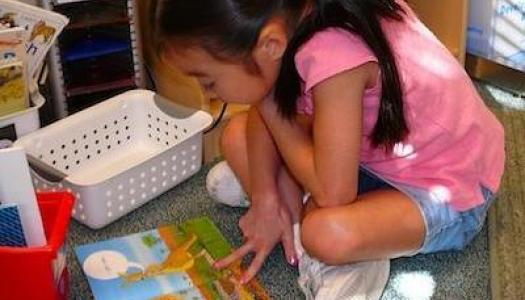Troubleshooting with the Barometer Behavior–Adding Tools to Build Stamina
Join Our Community
Access this resource now. Get up to three resources every month for free.
Choose from thousands of articles, lessons, guides, videos, and printables.
One question teachers have when they start using the Daily 5 is what to do about students who struggle with independent work. Most of our students, when given clear instruction on how to be independent (using the 10 Steps to Teaching and Learning Independence) will learn to self-manage in no time. However, we all have one or two students (some years even a few more) who struggle with building their independent behaviors, may require extra tools or different instruction to build their stamina at a pace that enables them to be successful.
This video features troubleshooting tools as they are used with Alise, a second-grade student who has a difficult time staying in one spot and reading the whole time. Her off task behaviors are inhibiting her ability to grow as a reader.
Prior to this video, her teacher had been noticing that Alise struggled to stay in one spot and read the whole time.
Joan does three things with Alise to help her begin to build stamina a little at a time. First, she has Alise choose a piece of fabric that 'feels good to her,' for sitting on. By providing a visual and physical location to sit, highly kinesthetic children seem to be much more likely to stay in one spot. We typically place the square yard of fabric against a wall so children have a place to lean against as well.
Next she talks with Alise about reading the whole time. Since Alise is not able to focus and sustain reading for more than about one minute at a time, she gives Alise her second tool, a one-minute sand timer, which gives her a visual cue of how long she must push herself to read without stopping. Thirdly, Joan gives her a very small container of Playdoh, one of Alise's favorite things. Alise reads until the sand runs out, flips the timer, plays with the Playdoh until the sand runs out, flips the timer, reads again, etc. The Playdoh provides a kinesthetic, but quiet break for Alise, and she gets back to reading after a minute, practicing the behaviors correctly.
Once Alise has had time to work with these materials, we introduce a second timer, this one with a bit longer time. We mark the new timer with a "B" for book. She then uses the "B" timer for reading from her book box, while the other timer continues to be Playdoh time. Alise continues to practice with the timers until we see she is able to comfortably sustain independence with the new, longer timer. Then we increase the "B" timer length again.
By slowly increasing the length of time she is reading, interspersed with kinesthetic brain breaks, students like Alise are able to build stamina at a pace that works for them.







